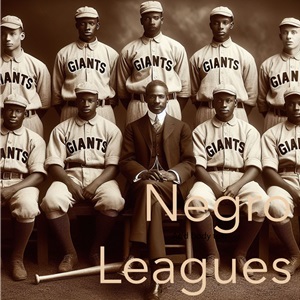 Enslavement
Enslavementto freedom


Moving Through and Meeting the Challenges
of the Twentieth Century
Study Areas
There Were Giants in Those Days: Harrisburg and the Negro Baseball Leagues
Part One
This article series is produced with the kind assistance of Ted Knorr and Calobe Jackson, Jr. of Harrisburg, Pennsylvania. Ted is a longtime member of SABR, and along with fellow members of the Harrisburg Negro League Commemorative Committee, works diligently to preserve the history of Black Baseball in Harrisburg. Calobe is also a member of SABR and the Harrisburg Negro League Commemorative Committee, and is a published historian and an encyclopedic source of information on Black History in Harrisburg.
Early Games and the Independent Era
On a crisp October day in 1867, nine Harrisburg men squared off against nine visiting Philadelphians in "a match game of ball" that grew out of a friendly invitation by the secretary of the Monrovia Base Ball Club of Harrisburg to the newly-formed Philadelphia Pythians. The visiting Pythians outscored the hometown Monrovians, 59-27, in this historic game, and would shortly be involved in events that would shape the game of baseball for the next century.
This game, however, was historic for Harrisburg because it is the first recorded game between an all Black Harrisburg baseball team and an all Black visiting team. Baseball had grown rapidly in popularity in the years following the Civil War, enthusiasm for the sport being strongest with veterans who had played the game in camp during the war. Interest immediately spread throughout the post-war population and soon games were being organized in every community across the country.(Knorr and Jackson)
Like most social and cultural pursuits of the period, however, these early games were usually segregated along racial lines. Although some integrated teams did exist, the infamous "color line" was drawn a few months after the Monrovians-Pythians game when the application by the Philadelphia club for admission into the National Association of Base Ball Players was rejected by the league, which declared, "If colored clubs were admitted there would be in all probability some division of feeling, whereas, by excluding them no injury could result to anyone." (Knorr and Jackson; Knutson)
While the players who made up Harrisburg's Monrovia Base Ball Club were amateurs with other livelihoods, a few Harrisburg men began to play with emerging professional teams in the coming decades. Jack Frye played professionally for a Reading, Pennsylvania club in 1883, and in 1885 joined another Harrisburg native, Clarence Williams, with Black baseball's first professional team, the Cuban Giants. (Knorr and Jackson)
By the end of the 19th century, many independent Black ball clubs were appearing in cities across the country. In Harrisburg, a young and ambitious entrepreneur named Colonel William Strothers began making inquiries in 1890 regarding the formation of a professional Black baseball club. Strothers' efforts soon led to the formation of the Harrisburg Colored Giants, which joined the existing Harrisburg Ponies, an integrated team, in playing visiting clubs such as the Cuban Giants and Cuban X Giants at various locations around the city, including Island Park.
 Under Colonel Strothers' management, the Harrisburg Colored Giants added local talent such as outfielder Spottswood Poles, of Harrisburg, Philadelphia Giant outfielder John Manning, and Arthur "Buddy" Carpenter. By the beginning of the 1920's, Strothers had crafted his Giants into a powerful and respected team. He added Herbert A. "Rap" Dixon, who had distinguished himself with the (Steelton, Pennsylvania) Keystone Giants a few years earlier. In 1922, legendary outfielder Oscar Charleston married a Harrisburg woman, Janie Blalock, and shortly thereafter decided to settle in the capital city and take on the dual role of player/manager for the Giants. (Knorr and Jackson; Brillhart)
Under Colonel Strothers' management, the Harrisburg Colored Giants added local talent such as outfielder Spottswood Poles, of Harrisburg, Philadelphia Giant outfielder John Manning, and Arthur "Buddy" Carpenter. By the beginning of the 1920's, Strothers had crafted his Giants into a powerful and respected team. He added Herbert A. "Rap" Dixon, who had distinguished himself with the (Steelton, Pennsylvania) Keystone Giants a few years earlier. In 1922, legendary outfielder Oscar Charleston married a Harrisburg woman, Janie Blalock, and shortly thereafter decided to settle in the capital city and take on the dual role of player/manager for the Giants. (Knorr and Jackson; Brillhart)
Further Reading
Blackball in Harrisburg
Original research article by Ted Knorr and Calobe Jackson.